.svg)
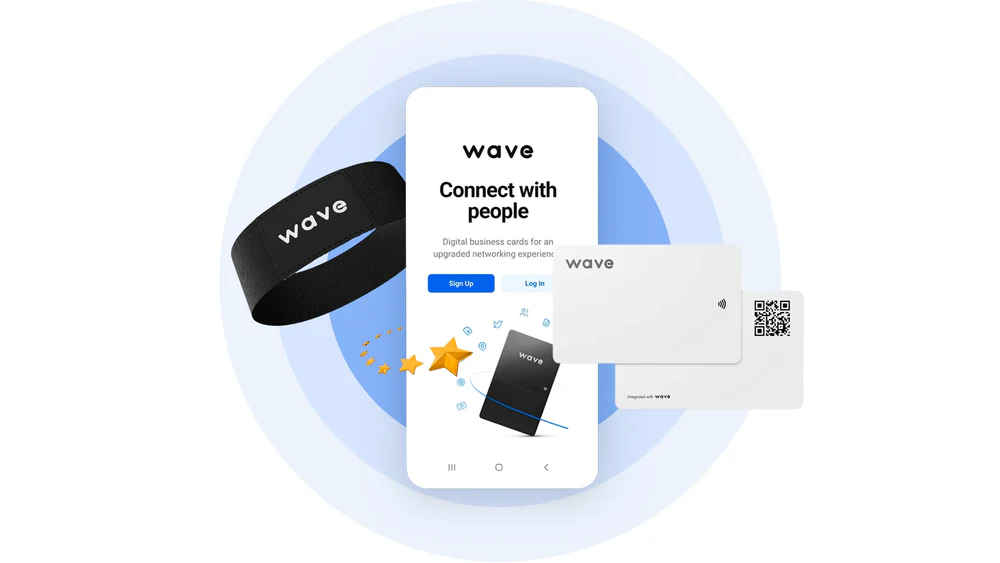
You know the moment when you reach for a paper card and the stack is gone, or the contact types your email wrong. A wave digital business Card and other smart digital business card designs let you share a polished digital profile with a tap or a QR scan, add contacts to a mobile wallet, and even see who saved your details. This article compares the best electronic business card options, NFC cards, QR solutions, virtual cards. It provides setup tips to help you find an easy, modern, and professional way to share contact information instantly without paper cards.
If that sounds like what you need, Mobilo's digital business card provides a simple, professional tool to share your vCard instantly, customize your contact page, and connect with leads at events or online. Set it up once and tap to exchange info, or send a QR, and keep your networking paper free.

Wave Connect replaces paper business cards with a digital contact card that you share instantly through QR codes, wallet passes, NFC tags, SMS, or email. You build a profile that holds phone numbers, email, social links, website(s), a gallery, and a short video intro if you upgrade.
When someone scans your QR code or taps an NFC card, their device opens your profile, allowing them to save your contact, follow links, or receive your info directly in their address book. The system works with or without a dedicated app and supports Apple Wallet and Google Wallet for one-tap access on mobile devices.
Account setup took under two minutes, and the onboarding felt the simplest among competitors I tested. You can quickly create a free profile, generate a QR code, and start sharing via scan, SMS, or email. Adding the card to Apple Wallet or Google Wallet took only a few taps.
The profile layout is clean and professional, suitable for most business settings. With the free plan, you can scan paper cards into the app, store unlimited contacts, add widgets on iOS, and use labels and tags to organize connections.
Which mode fits you best depends on whether you want to capture leads or simply exchange contact details quickly.
Wave Connect holds SOC 2 Type 2 certification and offers team features such as Active Directory support and SSO for enterprise control. G2 reviewers rate the platform highly for its ease of use in teams and enterprise deployments, which aids in rolling out the tool across sales and marketing groups.
Quick feature checklist you can use right now:
Wave is popular, but different teams and budgets need different feature mixes. Below are five solid Wave alternatives, each explained with who it fits, pros, cons, hands-on notes, and practical use ideas.

Mobilo focuses on NFC and QR contactless sharing, plus deep lead capture and CRM sync. It targets sales teams that need analytics, automatic lead enrichment, and follow-up automation. Book a demo and get the first 25 cards free (value $950). If you want to stop losing contacts that never enter your CRM, this platform is worth evaluating.
Key strengths and benefits:
Choose Mobilo when your team needs analytics, CRM integration, and reliable NFC hardware. If you want a lightweight, highly branded landing page and low cost for a single user, this may be more tool than you need.
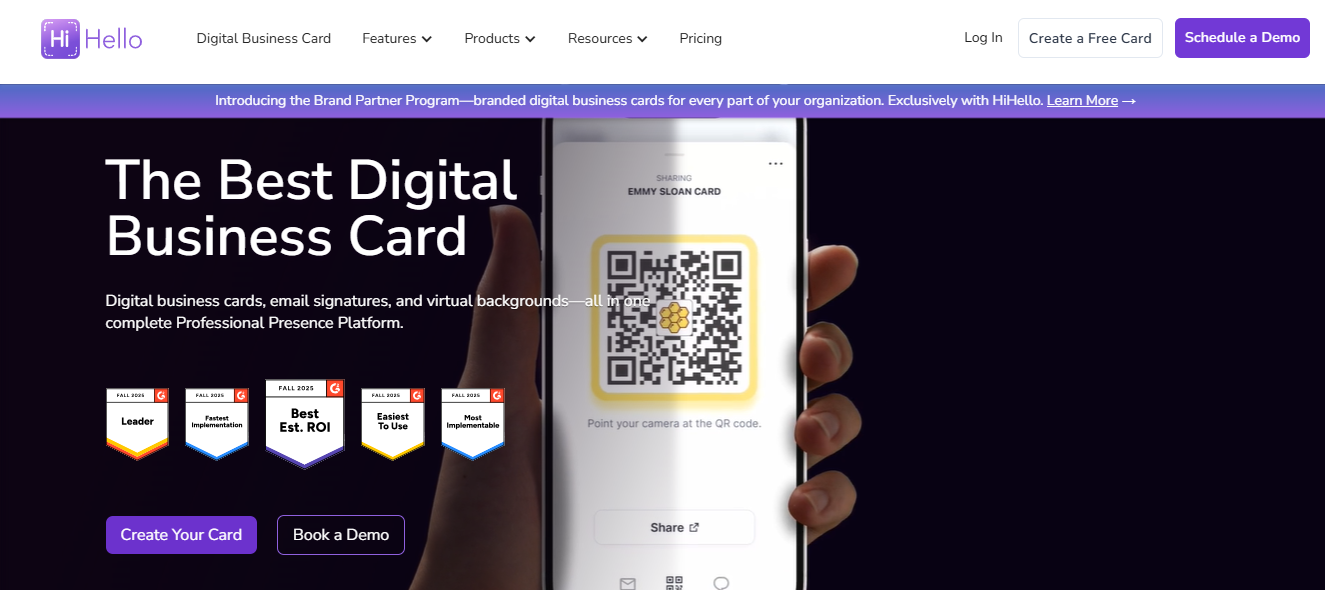
HiHello focuses on an easy-to-use digital business card and contact address book. It covers basic contact exchange, QR sharing, email signature generation, and cross-device widgets. It is friendly for freelancers, founders, and anyone who wants a clean, no-fuss virtual business card.
Key strengths and benefits:
Limitations and trade-offs:
Pick HiHello if you want a straightforward digital card, easy sharing, and an address book that updates. Avoid it if you need NFC products, bulk team provisioning, or automated lead workflows.
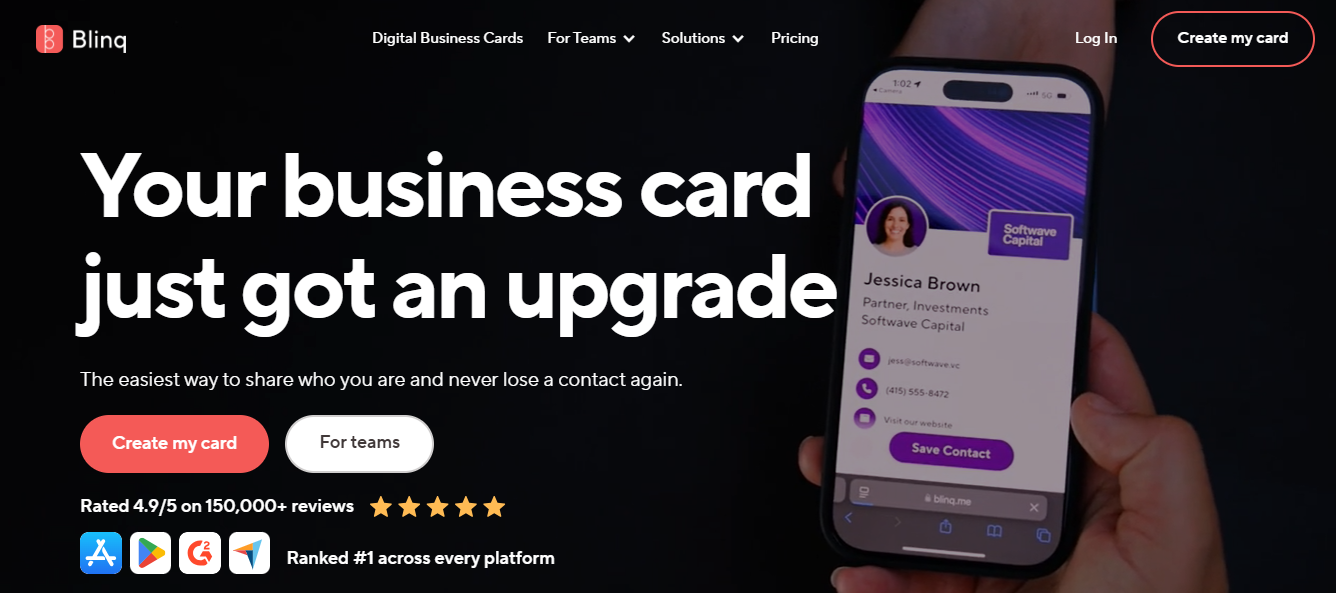
Blinq keeps features tight and predictable. It gives a customizable landing page with essential contact fields and link options. It aims at professionals who want a simple virtual business card and secure sharing without clutter.
Key strengths and benefits:
Limitations and trade-offs:
Freelancers and professionals who want a low-friction, secure, and affordable digital card will find Blinq attractive. If your priority is CRM sync or lead nurture, look elsewhere.

Popl offers highly customizable profile pages and a wide array of NFC products. It integrates with thousands of apps and supports multimedia embeds on the landing page. Use it when you want a polished digital portfolio attached to a physical tap card.
Key strengths and benefits:
Limitations and trade-off:
Choose Popl if you want a highly branded landing page, a wide selection of NFC hardware, and are willing to pay for the premium experience. If unlimited contact storage without a subscription matters, look elsewhere.
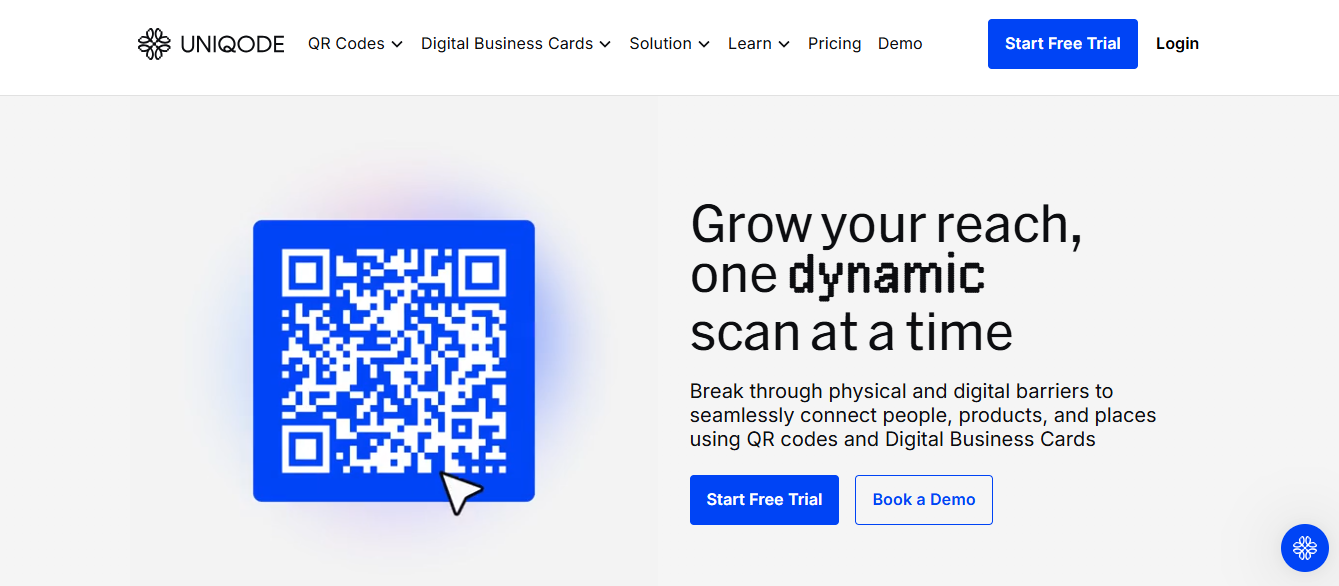
Uniqode centers on advanced QR customization, enterprise integrations, and scan analytics. It focuses on companies that want branded QR experiences with bulk provisioning and CRM connections.
Key strengths and benefits:
Limitations and trade-offs:
Pick Uniqode when you need branded QR codes at scale, bulk creation, and CRM analytics. If you need NFC hardware or mobile profile updates, you will miss those features.
Ask yourself these questions to choose the best Wave alternative:
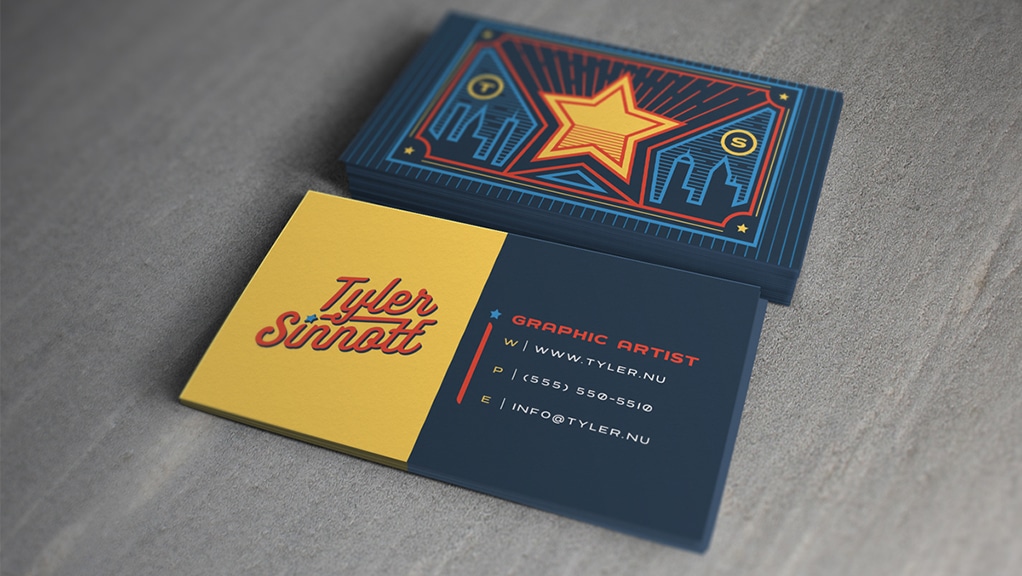
Set a clear type hierarchy by size. Use the largest point size for the company or personal name so it reads first. Put job title and taglines in a medium size. Place contact details smaller, but never below about 7.5 to 8 points for print on standard cardstock; many printers recommend 8 to 9 points as a practical minimum for legibility.
Always print a one-to-one mockup and read it from a normal holding distance to ensure these are clear:
Limit fonts to one or two families. Pick a primary font for name and headlines and a secondary font for contact details or body text. Use family variations like weight and italic rather than adding new typefaces.
This keeps your card cohesive and supports strong brand typography and type hierarchy without cluttering the layout.
Choose a font that reflects your business identity.
Ask yourself which emotion you want the card to convey and test a few options at the final size to see which aligns with your corporate identity.
Give content room to breathe. Maintain consistent margins and a generous safe zone so text never sits too close to the edge or the logo. Use line spacing that makes multi-line elements easy to scan; for contact blocks, set leading slightly above single spacing to improve readability.
White space guides the eye and increases perceived quality of the card.
Add thin rules to separate zones or to anchor the logo and contact block.
Keep lines simple:
Use alignment so lines tie visually to type elements. Avoid ornate or heavy decorations that compete with type; lines should clarify hierarchy and direct attention.
Match the tone and weight of type to the logo. If your logo is bold and heavy, use lighter weights to avoid fighting for dominance. If the mark is delicate, choose a sturdy companion typeface so the text reads at small sizes.
Place the logo and text on a verbal and visual grid so neither overshadows the other. Test the whole composition in grayscale to confirm balance without color cues.
To avoid awkward gaps, manually adjust kerning for:
Use tracking to tighten or loosen longer lines of text, but avoid extreme values that impair legibility. Set the line height so that stacked information, like address lines, reads without collision. Minor adjustments can improve readability and create a polished, professional finish.
To lead the viewer, use:
Balance clarity with hierarchy so every element earns its visual weight:
Ask which information must stand out and apply a stronger contrast there.
Choose fonts with good print rendering and avoid extreme display faces for small text. Convert type to outlines or embed fonts when sending print files to prevent substitution. Check the color mode for print in CMYK, and plan special finishes like foil or embossing, which can reduce legibility for wonderful strokes.
Allow for printer safe zones and bleed, and run a press proof when possible to confirm crisp type at the final size.
Consider these options by brand need and legibility:
Use scripts or decorative display fonts only for single, significant elements like a signature or accent word, and never for contact lines. Test each face at actual print size to confirm stroke thickness and counters hold up.
Pair a neutral sans with a modest serif for readable contrast. Use matching x heights or optical balance to keep pairs consistent. When pairing, let one family dominate and use the other sparingly.
Try one font for the name and one for contact details, or use a single family with two weights to simplify alignment and kerning.
Prioritize legibility for people with low vision by choosing open letterforms, avoiding condensed faces, and ensuring sufficient color contrast. Keep phone numbers and email addresses in plain, machine-readable layouts for mobile scanning.
Use simple separators like dots or vertical bars to break up lines so scanning apps and eyes find data quickly.
Which element will you test first on a printed proof?

Mobilo helps teams transform networking into a measurable pipeline.
Tap to:
The platform automatically:
Over 59,000 companies use Mobilo to increase lead capture and follow up at conferences and meetings.
Mobilo uses NFC and QR triggers, allowing a single interaction to create a full lead record.
The system enriches raw contact data with:
Built-in lead scoring compares behavior and attributes to your ICP, allowing sales to see prioritized prospects first. It maps fields to your CRM in real time so reps never rekey details.
Paper cards sit on tables or get stuffed into wallets and then forgotten. Sales teams waste hours typing contacts and correcting errors. With Mobilo, you capture information at the moment of contact and maintain audit trails, timestamps, and event context for every exchange, ensuring follow-up occurs while the meeting is still fresh.
Teams report up to 10x more leads at events because every exchange becomes a trackable, actionable record. Lead quality improves through enrichment and scoring, and pipeline velocity increases when qualified contacts land directly in your CRM.
Book a demo today and get your first 25 cards free (worth $950). If 90% of business contacts never make it into your CRM, you cannot afford to keep using paper cards.
Choose fonts that stay legible at small sizes and match your brand voice.
These fonts read well in compact layouts: clean sans-serif fonts like:
Classic serif choices such as Garamond, Baskerville, Georgia, and Times New Roman work for formal brands.
Avoid tight script or ornate display fonts for contact lines. Consider using professional, modern, classic, and clean fonts when designing both print and digital cards.
Set a clear hierarchy: name first at 14 to 20 point depending on typeface, role, and company at 8 to 12 point, and contact details at 7.5 to 10 point to keep everything readable. Use letter spacing and kerning to improve clarity for smaller text. Maintain consistent leading so lines do not crowd. Test the readability of digital cards at the actual card size and on mobile screens.
Want to see how this lowers friction and improves follow-up? Book a demonstration today and get your first 25 cards free (worth $950).
Join over 59,000 companies already using intelligent digital business cards that automatically exchange contact information, enrich lead data, score prospects against your ICP, and sync directly to your CRM.
• Vistaprint Digital Business Card
• Blinq vs Linq
• HiHello Alternatives
• Popl Alternatives
• How to Create a Digital Business Card on Android
• Google Digital Business Card

A digital business card gives you convenience, a more professional first impression, and faster networking. You hand over a link or tap an NFC product, and someone can save your full profile in seconds. You can update your details in real time, track who viewed your card with Wave analytics, and stop paying for reprints.
Decide the core fields such as name, title, phone, email, company, and location. Then pick extras that matter for your role:
Set goals for the card so you know whether you want lead capture, meeting scheduling, or simple contact sharing.
Choose a clean layout and use your company colors, logo, and fonts. Add one clear call to action, like Schedule a Call or View Portfolio. Test contrast for legibility on phones. Use Wave Digital Card templates or custom CSS in the Wave platform to keep a consistent team look.
Embed links to your website, LinkedIn, Instagram, and a short intro video. Turn on Wave analytics and lead capture so you see views, shares, and follow-up opportunities. Add forms or calendar links to convert interest into meetings.
Publish your card on the Wave Connect platform and enable Apple Wallet or Google Wallet passes. Generate a QR code and pair your card with Wave NFC products. Share via email signature, SMS, virtual backgrounds, or a home screen widget so people can tap or scan in the moment.
A digital business card is the online version of the paper card. It carries your essential information but also includes links, videos, and interactive content. It lives on a URL or a Wallet pass, allowing recipients to save, share, and return to it. You can update details any time in the Wave platform, so everyone with your link sees the latest info.
Capture more leads with built-in forms and Wave analytics that show who opened your card and when. Save on printing and reduce waste by switching an entire team to Wave corporate digital cards. Stay current because once the Wave Digital Card is updated, it propagates everywhere.
Add branding, colors, fonts, and video to tell a richer story than paper allows. Use Wave team management to roll out uniform profiles and permissions for employees. Gain insights with engagement metrics so sales and marketing know which cards are performing well.
Mobilo converts handshake moments into tracked opportunities. Teams tap a Mobilo card, wave the NFC, or scan a QR code, and contact details move straight into a sales workflow. That means less manual entry, fewer lost contacts, and faster follow-up.
Ready to transform your team's networking and generate 10x more leads at every event with Mobilo's smart digital business cards? Book a demo today and get your first 25 cards free, worth $950, because 90 percent of business contacts never make it into your CRM.
Wave Digital Business Card solutions offer NFC sharing, tap-to-share convenience, and a clean virtual business card experience. Mobilo matches those basics and layers in lead enrichment, ICP prospect scoring, and CRM integration that updates records in real time. If you want contactless business card exchange with analytics and automated follow-up, Mobilo offers more than just a tap to share or a mobile wallet link.
Mobilo cards support NFC wave card technology, QR code sharing, and direct mobile wallet savings. Each exchange captures source data, timestamps, and the event context, then enriches contacts with company information and intent signals. The platform scores those leads against your ideal customer profile, allowing sales teams to see priority prospects first. The CRM sync removes the need for manual entry.
At conferences, a single Mobilo card can replace a stack of paper cards and capture richer data than a handwritten note. Sales teams use cards during meetings and site visits to register interest on the spot. Marketing collects event-level metrics to measure engagement by booth, speaker, or session.
Mobilo stores data with encryption and supports consent capture at the point of exchange. You control what fields sync to your CRM and how long raw event data is retained. The platform integrates with common compliance workflows so legal and privacy teams can set policies without slowing sales.
• Blinq vs Linq
• Google Digital Business Card
• Vistaprint Digital Business Card
• Popl Alternatives
• How to Create a Digital Business Card on Android
• HiHello Alternatives